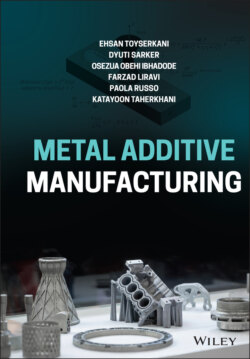Читать книгу Metal Additive Manufacturing - Ehsan Toyserkani - Страница 25
1.5.5 Automotive
ОглавлениеThe automotive industry's interaction with AM goes back to 1980s. Today, some customized plastic parts used in the interior of cars, specifically luxury and highly personalized models, are 3D printed. In addition, plastic AM processes have been widely used to develop jig and fixtures and prototypes for design verification. The application of metal AM in this industry, however, has been mainly in the area of producing prototypes, heritage parts for obsolete models, and spare parts and tools. AM‐made tools are an important area that has been used for mold production and tooling. In the luxury or race car sectors, however, many examples of production of end‐use metal parts exist. For example, Ford Motor Company (FMC) (Detroit, MI, USA) has used the LPBF process from EOS to fabricate anti‐theft wheel locks by converting the owner's recorded voice into a circular pattern, which will form the indentation needed to design a locking mechanism and a custom key. DS Automobile designers have also used EOS systems for the production of custom car accessories such as titanium door handle frames. Ford wheel locks and DS Automobile door handle frames are shown in Figure 1.18.
Even though the automotive industry has not reached the level of using AM directly for the production of final metal parts in serial production vehicles yet, a new trend for reaching that goal has already started. Many automotive companies such as Volkswagen (Berlin, Germany), BMW Group (Munich, Germany), Porsche (Stuttgart, Germany), General Motors (GM) (Detroit, Michigan), Toyota (Toyota City, Japan), etc. have entered the AM market either through investing in the improvement of their in‐house AM capabilities or through making alliances with machine developers, 3D software companies, AM material producers, or research centers to expedite the adoption of metal AM. A project called “Industrialization and Digitization of Additive Manufacturing for Automotive Series Processes (IDAM)” was kicked off in 2019 in Germany for this purpose [30]. The automotive industry would be able to take advantage of the various commercial PBF and BJ systems producing final parts with properties similar to those of wrought or injection molding, respectively. A lower level of certification required by the automotive industry than aerospace and aviation should make such a transition easier.
In general, AM will be a key for supply chain transformation in the automotive industry. AM has the tremendous ability to reduce overall lead time, thus fostering market responsiveness. AM features resulting in less material usage, lightweight components, on‐demand and on‐location production, and decentralized manufacturing at low to medium volumes will be driven force to significantly change the supply chain in terms of cost reductions, improved ability to locally manufacture parts, reduce complexity, and promoting consumer segments and markets satisfaction without any extensive capital deployment/investment.
Figure 1.18 (a) Ford's custom anti‐theft wheel lock being printed in EOS PBF system
(Source: Courtesy of EOS [27]),
(b) Ford's custom anti‐theft wheel lock
(Source: Courtesy of Ford Motor Company [28]),
(c) custom titanium door handle frame in DS3 Dark Side edition from DS Automobile
(Source: Courtesy of PSA [29]).
